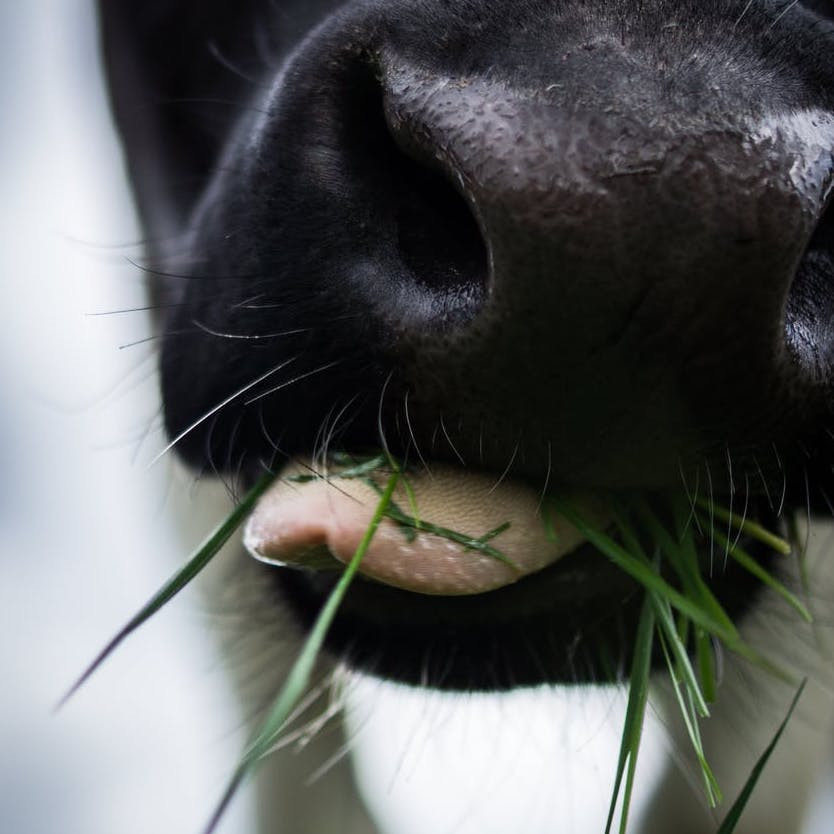3 smart reasons to proudly drink grass-fed milk
posted on
April 27, 2018

I hope you are enjoying the beautiful spring!
Having you been watching the grass grow? The cows have officially switched from hay to fresh grass... and here comes my beloved yellow, nutrient-dense, spring milk.
I pour my family grass-fed milk with confidence. You should, too. Here are 3 smart reasons why:
REASON 1. Neutral ph means healthy, antibiotic-free cows.
Cows are ruminants, which means they are designed to digest fibrous grasses and other plants. When grain and corn (quickly-digested carbohydrates with much less fiber) are fed to cows, it immediately changes the pH of the rumen, making it more acidic.
Lower pH can result in higher risk of infections, systematic inflammation, bloat, decreased immunity, and a host of other health issues. Grain-fed cows on large, conventional dairies are sometimes given routine preventative antibiotics for these reasons.
Grass-fed cows maintain a neutral pH. They can be naturally healthy and, if necessary, heal with homeopathic medicine.
REASON 2. Favorable fatty acid profile for a healthy body and brain.
Omega-3 fatty acids are beneficial for battling inflammation and heart disease and for promoting brain health. Omega-6 fatty acids are very important to the brain, to help strengthen its much- needed function through healthy growth and development.
You don’t just need fatty acids. You need an optimal ratio of them, and grass-fed milk has exactly the ratio you need.
According to research published in the American Journal of Clinical, the recommended ratio of omega-6/omega-3 fatty acids in the diet is 2.3/1. The cows’ diet makes a big difference in the proportion of these fatty acids. Milk from grass-fed cows has a ratio of approximately 2.3/1 - the recommended optimal ratio - compared to a ratio of 5.8/1 for milk from conventionally-fed cows.
REASON 3. Managed grazing is better for the environment.
Managed grazing requires less fossil fuels. Feed is not continuously grown, processed, and shipped to the farm. The cows’ food is simply there, being eaten and grown on rotation.
This style of farming keeps pastures fertile, healthy, and lush.
Growing corn and grain specifically for cattle feed uses huge amounts of resources, and sometimes chemical fertilizers and pesticides.
On a 100% grass-fed operation manure is spread over the pastures by roaming cows, replacing nutrients lost by the growing plants, rather than forming in feedlot pools and causing detrimental runoff.
Be proud to drink grass-fed milk. You are doing right by your body and the world.




